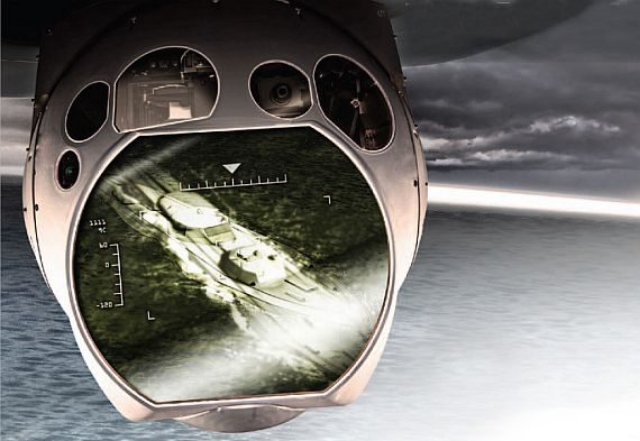U.S. Air Force electro-optical surveillance experts needed next-generation multispectral targeting sensor systems for the MQ-9 Reaper attack unmanned aerial vehicle (UAV) and other reconnaissance aircraft. They found their solution from the Raytheon Co.
Officials of the Air Force Life Cycle Management Center at Wright-Patterson Air Force Base, Ohio, announced an $281.9 million contract Friday to the Raytheon Space and Airborne Systems segment in McKinney, Texas, to build and upgrade AN/DAS-4 multispectral targeting system (MTS) Model B high-definition and target location accuracy turrets.
The AN/DAS-4 multispectral system offers four high-definition cameras covering five spectral bands; a three-color diode pump laser designator and rangefinder; laser spot search and track capability; automated sensor and laser bore sight alignment; three mode target tracker; and built in provisions for future growth, Raytheon officials say.
The contract calls for Raytheon to provide 127 AN/DAS-4 MTS-B high-definition and target-location accuracy turrets; 40 DAS-1A to DAS-4 turret unit upgrades; one lot of initial shop replaceable unit spares; one lot of capacity increase production support; and one lot of data.
The AN/DAS-4, the latest variant of the Raytheon MTS sensor family, incorporates greater fire control and target location accuracy technology than previous MTS versions for precise coordinates.
The AN/DAS-4 MTS enables mission commanders to use high-definition data from an airborne tactical sensor to identify and engage targets with much greater accuracy than previous-generation systems could, Raytheon officials say. This sensor system also is going aboard the U.S. Navy MQ-4C Triton long-range maritime patrol UAV.
This advanced electro-optical and infrared (EO/IR) system provides tracking and laser designation for the Griffin and Paveway missiles, as well as all tri-service and NATO laser-guided munitions. MTS sensors offer several fields of view, electronic zoom, and multimode video tracking.
Multispectral sensors divide images and video into several light wavelengths — typically three to 15 spectral bands — across the electromagnetic spectrum, including light from frequencies beyond the visible light range such as infrared and ultra-violet.
Dividing images into several different wavelengths enables the sensor to extract additional information the human eye fails to capture with its receptors for red, green, and blue.
The L-3 Technologies Advanced Laser Systems Technology (ALST) segment in Orlando, Fla., is providing the eye-safe laser rangefinders for the Raytheon MTS.
On this contract Raytheon will do the work in McKinney, Texas, and should be finished by September 2020.
Source: Military Aerospace

